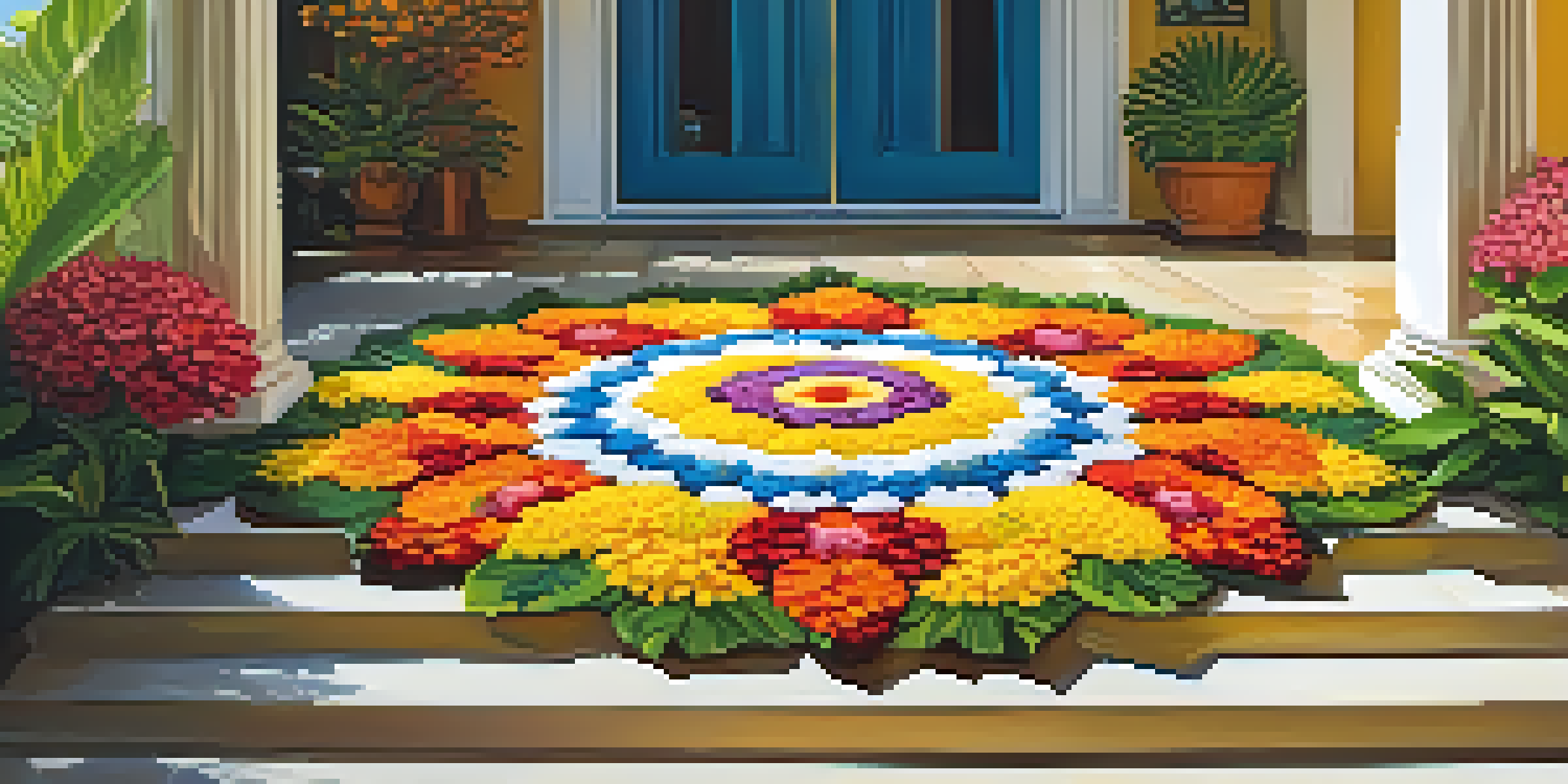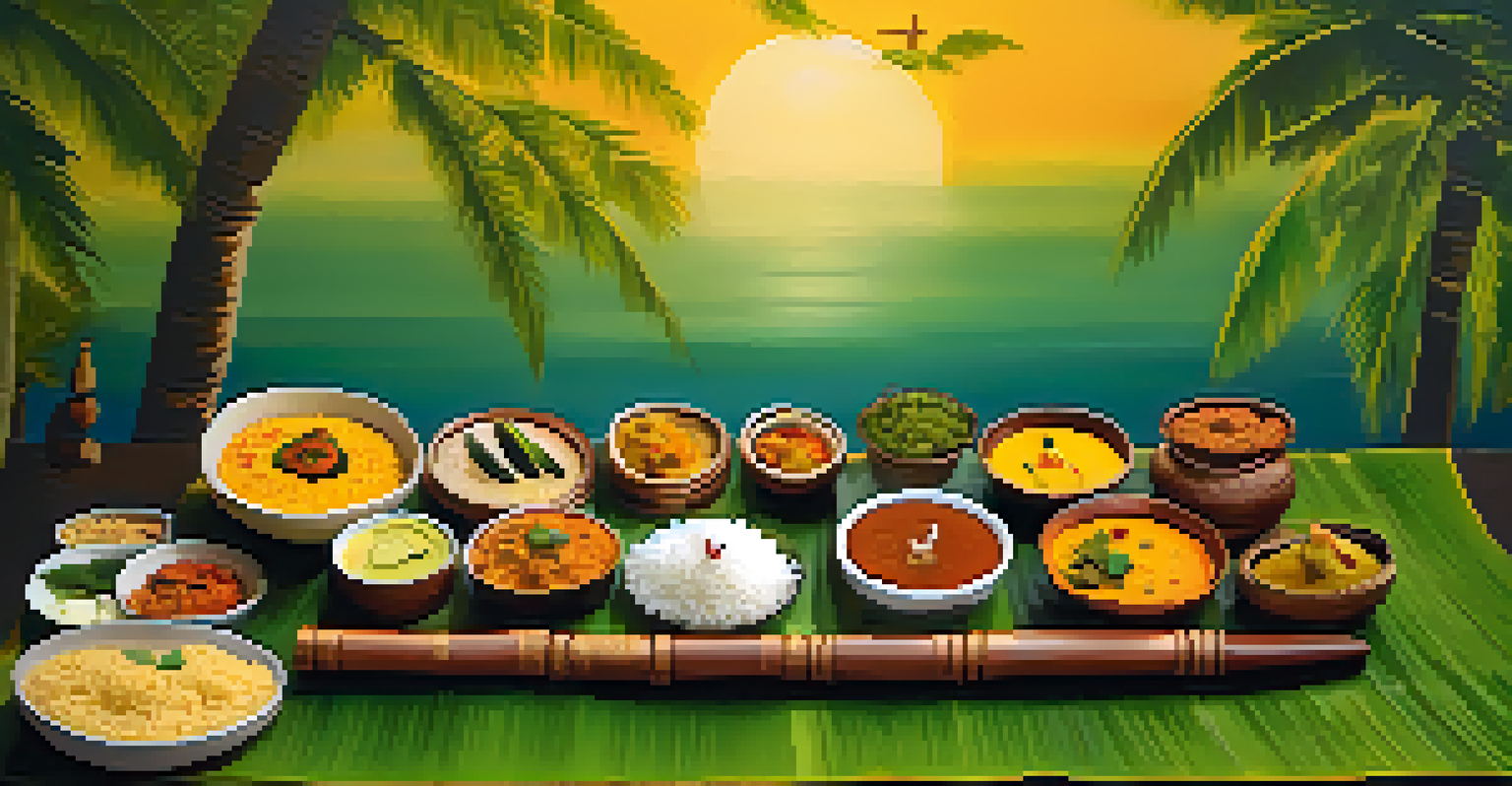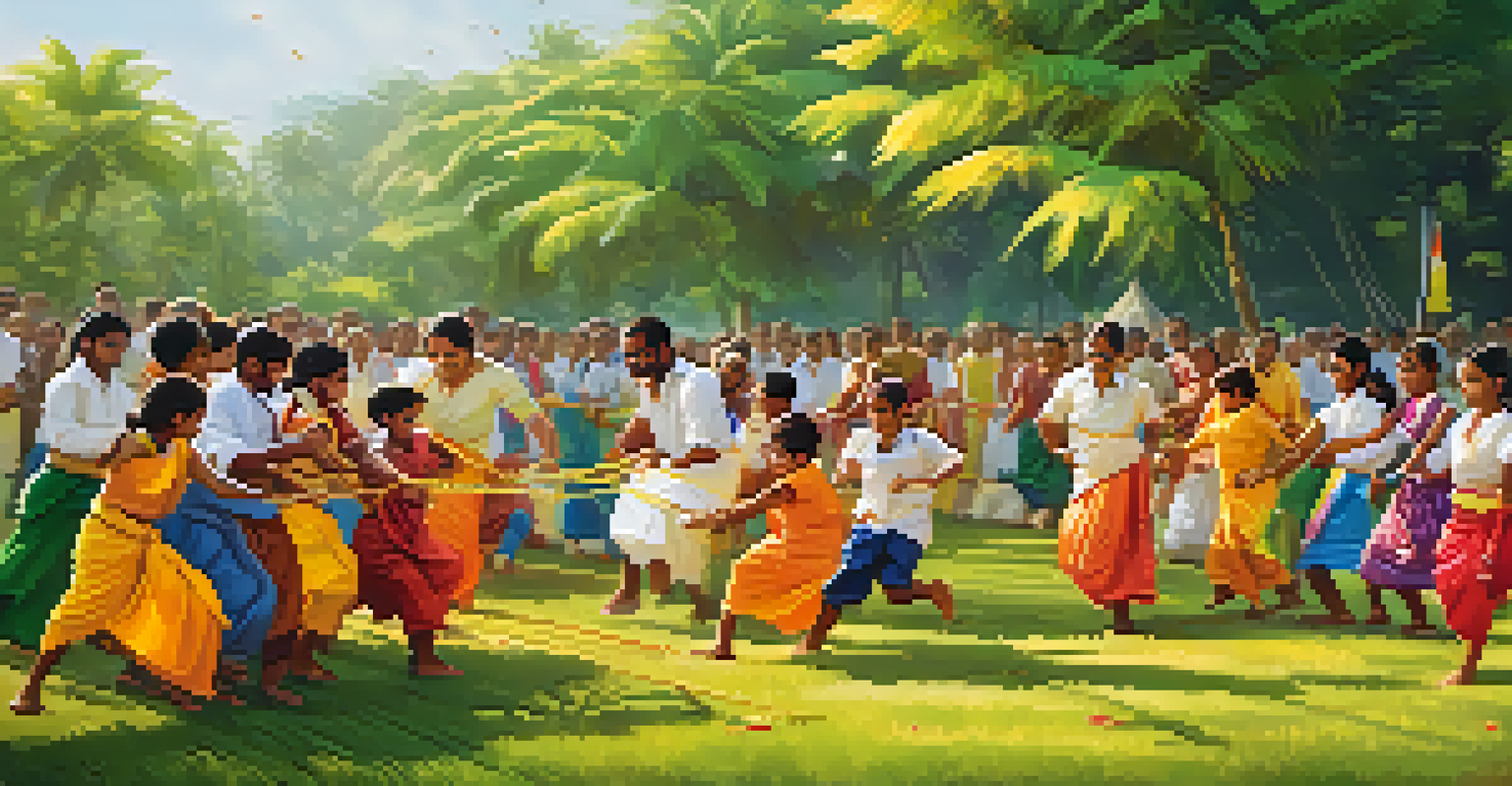A Guide to Kerala's Onam: Celebrating Harvest and Culture

Understanding Onam: A Festival of Abundance
Onam is a significant festival in Kerala, celebrated to mark the harvest season. It symbolizes the homecoming of the mythical King Mahabali, who is believed to visit his subjects during this time. The festival reflects the rich cultural heritage of Kerala, showcasing the state's agricultural bounty and communal harmony.
Festivals are an opportunity to celebrate togetherness and create memories that last a lifetime.
This vibrant festival typically falls in the months of August or September and lasts for ten days. Each day has its own set of rituals and celebrations, culminating in the grand Onam feast. The festival is a time for families to come together, share food, and participate in various cultural events, deepening their connections.
Onam is not just a celebration of the harvest; it also emphasizes values such as unity and generosity. People from all walks of life come together, transcending social and economic barriers, to celebrate their shared heritage and joy.
The Significance of Onam Pookalam
One of the most beautiful traditions of Onam is the creation of 'Pookalam', which are intricate floral arrangements placed in front of homes. These vibrant designs are made using a variety of flowers, showcasing creativity and artistry. Each day of Onam, families add new flowers to their Pookalam, making it a living representation of the festival's joy.

Pookalam serves not only as a decorative element but also symbolizes the welcome extended to King Mahabali. The colors and patterns are reflections of the abundance and prosperity associated with the harvest season. It's a delightful way for families to express their artistic flair while celebrating their culture.
Onam Celebrates Harvest and Unity
Onam is a festival in Kerala that marks the harvest season and emphasizes values of unity and generosity among communities.
Moreover, Pookalam competitions are held in many communities, fostering a sense of healthy competition and camaraderie. Participants often come up with elaborate designs, showcasing teamwork and bringing neighborhoods together in celebration.
Onam Sadhya: A Feast for the Senses
The Onam Sadhya is a grand feast that epitomizes the spirit of sharing and abundance during the festival. Served on a banana leaf, this vegetarian meal includes a variety of dishes, each bursting with flavor and color. It usually features rice, curries, pickles, and desserts, collectively creating a symphony of tastes.
Tradition is not the worship of ashes, but the preservation of fire.
Eating Sadhya is an experience in itself, where diners sit together and enjoy the meal in a communal setting. The act of sharing food is central to the festival, reinforcing bonds among family and friends. Each dish tells a story, often passed down through generations, enriching the cultural tapestry of Kerala.
Traditionally, the Sadhya is served in multiple courses, with each dish complementing the other. This not only showcases the culinary diversity of Kerala but also highlights the importance of hospitality, a cherished value in the region.
Cultural Performances: A Showcase of Tradition
Onam is not just about food; it's also a time for vibrant cultural performances that bring communities together. Traditional dance forms like Thiruvathira, Kathakali, and Mohiniyattam are prominently featured during the festival. These performances narrate stories from mythology, engaging audiences with their colorful costumes and dramatic expressions.
Apart from dance, music plays a crucial role in the celebrations. Folk songs and traditional instruments create an atmosphere of joy and festivity. Many communities organize cultural programs, allowing local artists to showcase their talents and keep traditions alive.
Pookalam: A Floral Welcome Tradition
The creation of Pookalam, intricate floral arrangements, symbolizes the welcome extended to King Mahabali and showcases artistic expression.
These performances are not only entertaining but also educational, as they often convey moral lessons and cultural values. They remind participants of their roots and the importance of preserving their heritage for future generations.
Onam Games: Fun and Togetherness
Onam is also celebrated with a variety of traditional games that add an element of fun to the festivities. These games, known as 'Onam Kali', involve both children and adults and foster a spirit of teamwork and friendly competition. Popular games include tug-of-war and boat races, which are thrilling spectacles to watch.
Participating in these games not only brings joy but also strengthens community bonds. Families and friends gather to cheer for their teams, creating an atmosphere filled with laughter and excitement. The competitive spirit is embraced, but the focus remains on enjoying the moment together.
These games are a reminder of Kerala's rich cultural heritage and the importance of play in fostering relationships. They encourage teamwork, strategy, and, most importantly, a sense of belonging within the community.
The Role of Ayurveda in Onam Celebrations
Ayurveda, the ancient Indian system of medicine, plays a subtle yet significant role during Onam. Many families incorporate Ayurvedic principles into their meals, focusing on balance and nourishment. The Sadhya itself is designed to be wholesome, often featuring ingredients believed to promote health and well-being.
During Onam, it's common for people to indulge in Ayurvedic treatments and wellness practices. The festival is seen as an opportunity to rejuvenate the body and mind, aligning with the themes of harvest and renewal. Ayurvedic massages and herbal remedies are popular, emphasizing self-care during this festive time.
Onam Sadhya: A Feast of Togetherness
The Onam Sadhya is a grand vegetarian feast served on banana leaves, reflecting the spirit of sharing and the rich culinary heritage of Kerala.
This holistic approach to health during Onam reflects the broader cultural ethos of Kerala, where wellness and balance are highly valued. It encourages participants to not only celebrate outwardly but also to nurture their inner selves.
Onam Today: A Blend of Tradition and Modernity
While Onam is steeped in tradition, it has also evolved over the years, adapting to modern lifestyles. Today, people celebrate the festival in diverse ways, from grand community events to intimate family gatherings. This blend of old and new allows everyone to partake in the festivities, regardless of their circumstances.
Technology has also played a role in how Onam is celebrated, with social media platforms being used to share experiences and connect with loved ones. Virtual celebrations have become more common, especially in recent years, bringing families together across distances.

Despite these changes, the core values of Onam remain intact—unity, respect for nature, and appreciation for culture. This evolution ensures that the essence of Onam continues to thrive, making it relevant for future generations.